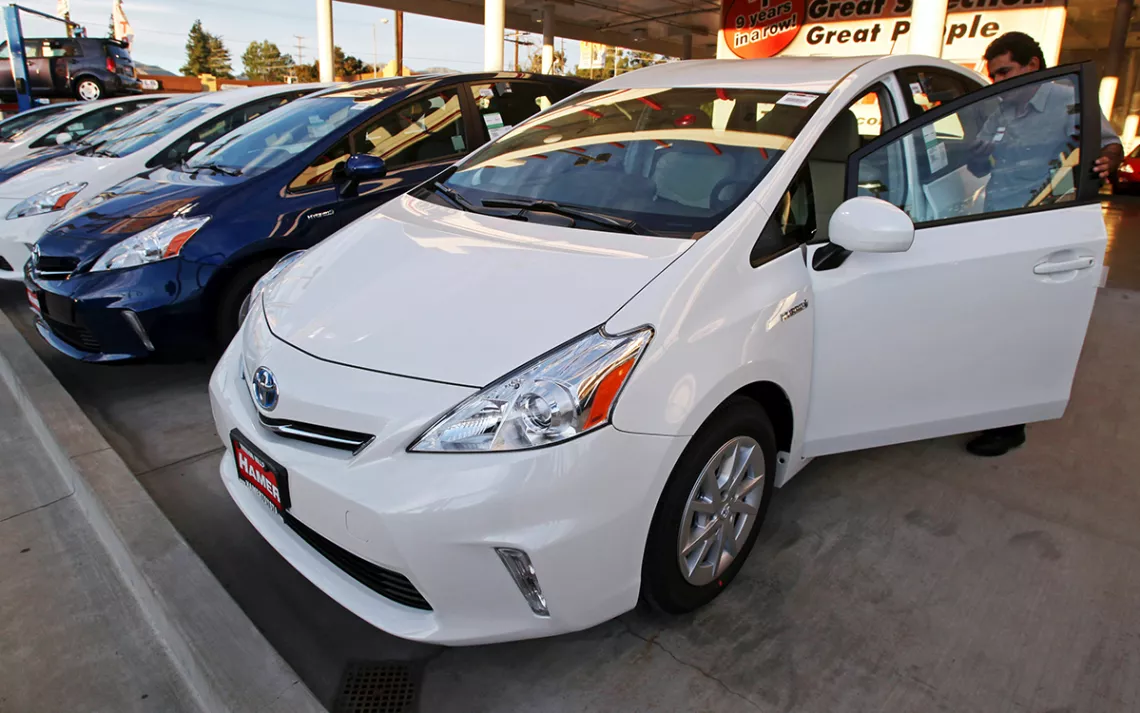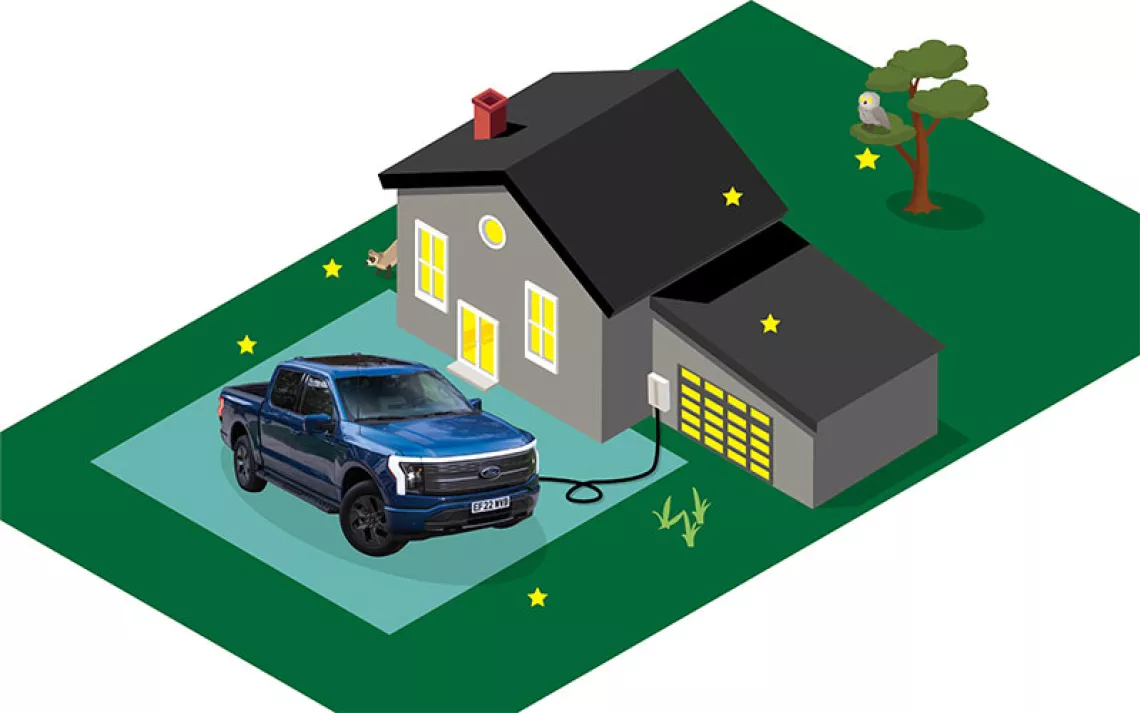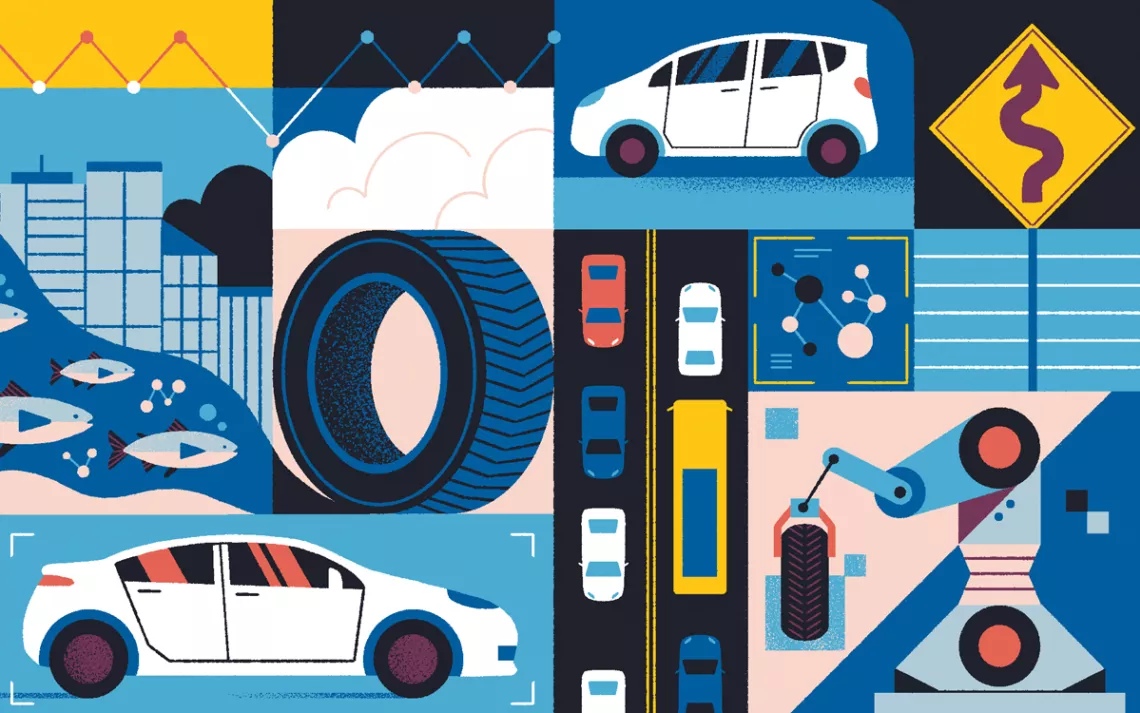Here’s Why Getting an Electric Vehicle at a Dealership Is So Hard
As demand for electric vehicles grows, dealerships struggle to make them available

Photo by Reed Saxon/AP
In theory, getting an electric vehicle should be easier than ever. Most car manufacturers now offer all-electric or plug-in hybrid options, and new tax credits from the Inflation Reduction Act include even more incentives for car buyers.
Americans are buying more and more electric vehicles too: In 2022, EVs composed almost 8 percent of all car sales, up from less than 1 percent in 2012. And new proposed federal rules on car emissions aim to speed the transition up even more. That could have huge benefits for the climate, since the transportation sector is the largest contributor of greenhouse gases in the US.
Despite the boom, it’s still almost impossible for some consumers to purchase EVs from traditional dealerships. A recent report from the Sierra Club found that 66 percent of car dealerships in the US did not have a single all-electric vehicle or plug-in hybrid vehicle available for sale. “There's been an increase in the number of electric vehicles that manufacturers are making. But it's still challenging to purchase an electric vehicle,” said Katherine Garcia, director of the Sierra Club's Clean Transportation for All campaign and an author of the new report.
Toyota and Honda dealerships had the worst availability of EVs, with just 15 percent of Toyota dealerships and 11 percent of Honda dealerships reporting at least one EV or plug-in hybrid vehicle in stock. A letter sent from 54 consumer and environmental organizations to Toyota’s new CEO in March noted the company’s “refusal” to lead a rapid transition to EVs.
Honda does not currently offer any fully electric vehicles. “There have been global production backlogs on key automotive components over the last few years, which have reduced the volume of production across the industry, including Honda,” Chris Martin, a spokesperson for Honda, said in a statement to Sierra. Toyota did not respond to requests for comment.
There are a number of reasons that dealerships are failing to stock EVs. For one, ramping up production can be tough for legacy manufacturers whose production lines were originally built for making gas-powered vehicles, said Peter Slowik, who researches EV technology and policy at the nonprofit International Council on Clean Transportation. Additionally, supply chain issues plague the industry, and sourcing of the minerals and metals needed to make EV batteries has grown more difficult as demand for EVs rises, according to a report from the International Energy Agency. “Companies are dragging their feet a little bit,” said Slowik. “They've made these really bullish announcements in terms of investments into electrification. But we've yet to see some of those announcements really come to fruition in terms of much greater volume and widespread availability.”
Without any EVs in stock, consumers looking to purchase a car aren’t able to test-drive it, which lowers the likelihood that they’ll buy one at all. “Test-driving is a really important thing for a lot of people who are considering any new vehicle purchases,” said Slowik.
Angelle Bradford, a Sierra Club member based in southern Louisiana, surveyed four dealerships—Audi, Volvo, Toyota, and Ford—for the report. She found that multiple dealerships didn’t have EVs or plug-in hybrids available to test-drive and told her she would have to buy the vehicle sight unseen. Additionally, she felt that the dealerships didn’t push EVs in the way they promoted other cars. “They really pitched electric as a luxury, which felt super out of financial reach for us,” she said. “Then they overly highlighted the downfalls, like the range [of EVs].” Bradford wants to eventually buy Ford’s all-electric Mustang Mach-E but anticipates the process will be difficult. “I never saw it on a lot. I don't even know how I would ever get it without having to travel pretty far. It seems like a daunting task,” she said.
Even hybrids that don’t plug in, such as many Toyota Prius models, are unavailable to test-drive in some parts of the country. Saima Sidik, a journalist living in the Boston area, spent much of last fall searching for a 2023 Prius LE, a hybrid car. The dealerships she visited didn’t have the car available to test-drive, so she ended up test-driving the vehicle through car rental service Zipcar. Even after determining that it was the model she wanted, Sidik found it difficult to get on a waitlist to buy one. “I got the impression that they couldn't predict what their supply would be well enough to even have some sort of a waiting list,” she said. “It was odd.” Sidik ultimately purchased a 2021 Prius LE from Carvana, a service that lets consumers purchase vehicles online.
But supply chain and allocation issues are just part of the problem: Many dealerships surveyed in the report said they wouldn’t stock EVs even if they could.
There are two main reasons why dealerships might not want to sell electric vehicles, said Vivek Astvansh, a professor of marketing at Indiana University. The first is that dealerships make much of their money from servicing cars, in addition to selling them. But electric vehicles have fewer mechanical parts than gas-powered vehicles, and a dealership’s potential revenue from servicing an EV is much lower. “Dealerships don’t see selling electric vehicles as beneficial,” said Astvansh.
The second reason is that most salespeople don’t drive EVs themselves and may be less familiar with electric vehicles and less able to promote them. “These salespeople do not really know the benefits and costs of driving an electric vehicle. And thus, they cannot do a good job of informing the prospective customers,” said Astvansh.
“What we have here are traditional manufacturers that haven’t gone all in on the shift to electric vehicles,” said Garcia. “If these dealers are not hearing from manufacturers that there are going to be more and more electric vehicles available, they might just be very resistant to starting to sell electric vehicles or being trained on how to sell electric vehicles.” Eventually, Garcia expects demand for EVs to change how dealerships operate. “They'll realize that they're leaving money on the table if they can't supply electric vehicles to prospective buyers,” she said. “The needle is moving, but it's moving slowly.”
One way to speed up the transition is through policy that encourages manufacturers to make more EVs available. For example, some states have enacted zero-emission vehicle standards that require a certain percentage of vehicles sold in the state to be hybrids or all-electric vehicles. California’s newest iteration of its Zero-Emission Vehicle standards require all new light-duty vehicles sold in the state to be zero-emission vehicles by 2035. “Automakers tend to deploy and make available electric vehicle models in the markets that have the most supporting policies in place,” said Slowik. If more states adopt similar rules, that could incentivize manufacturers to send EVs to a wider selection of states.
In addition to suggesting the adoption of zero-emission vehicle standards, the report calls for states to create new consumer-rebate programs, educate consumers on the benefits of EVs, and require utilities to install more charging stations at workplaces and in neighborhoods. The report asks manufacturers to scale up EV production as well. Improving incentives for domestic battery production, such as those available in the Inflation Reduction Act, could help improve the supply chain issues that manufacturers face, said Astvansh.
Beyond EVs, transportation emissions could be cut drastically by more investments in public transportation, said Garcia. “For people who need to drive or choose to drive, they should be driving the cleanest car. We absolutely need to move away from fossil fuel cars.”
 The Magazine of The Sierra Club
The Magazine of The Sierra Club



